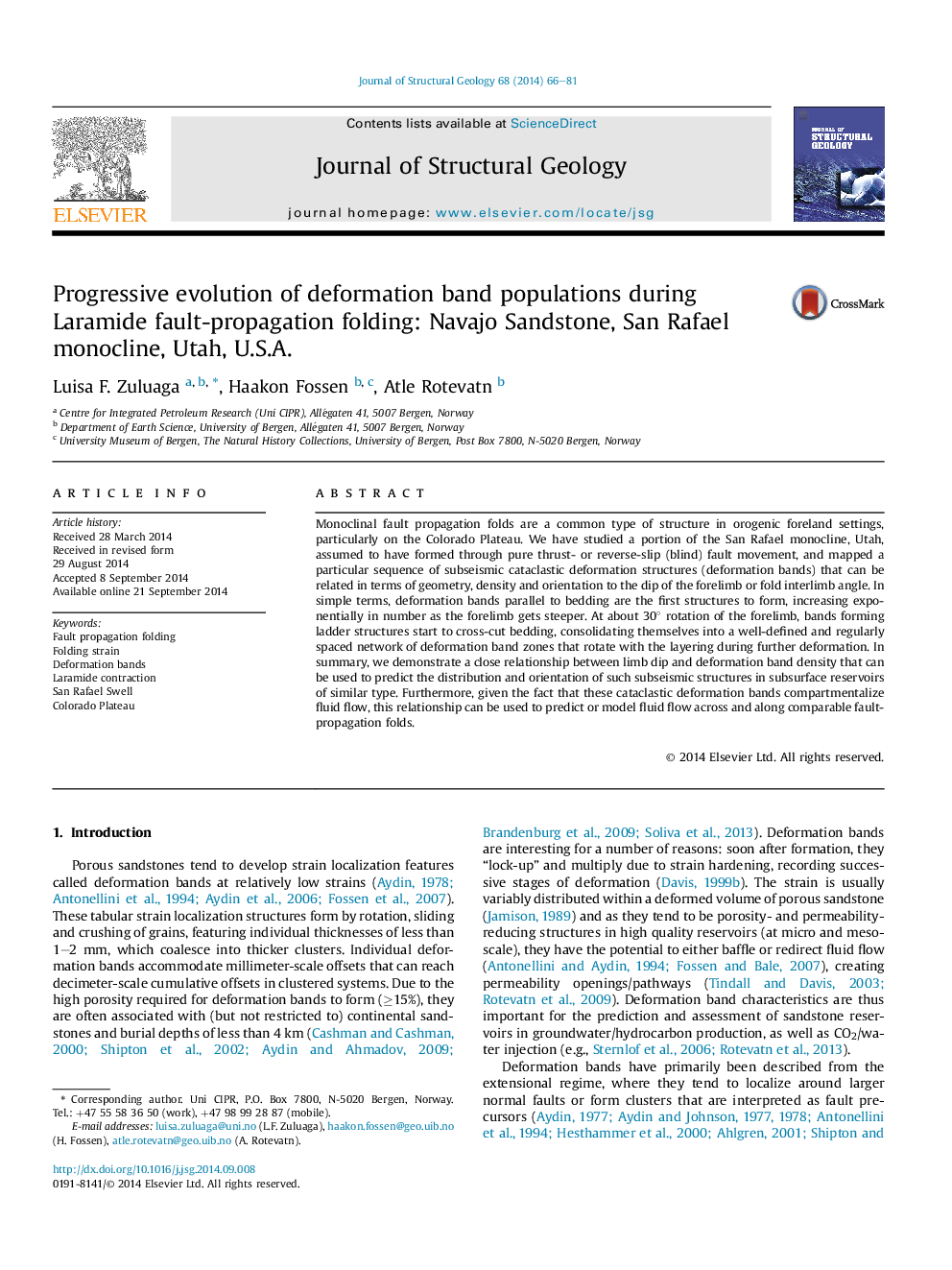| Article ID | Journal | Published Year | Pages | File Type |
|---|---|---|---|---|
| 4733074 | Journal of Structural Geology | 2014 | 16 Pages |
•A sequence of deformation band development in a fault-propagation fold is proposed.•Strain is mainly accommodated by semi-brittle failure via deformation band arrays.•Minor strain is accommodated by host rock mechanical compaction.•Orientations are congruent with local stresses affected by regional E-W shortening.•At metric scale, permeability reduction is of 2 orders of magnitude, porosity of 1.
Monoclinal fault propagation folds are a common type of structure in orogenic foreland settings, particularly on the Colorado Plateau. We have studied a portion of the San Rafael monocline, Utah, assumed to have formed through pure thrust- or reverse-slip (blind) fault movement, and mapped a particular sequence of subseismic cataclastic deformation structures (deformation bands) that can be related in terms of geometry, density and orientation to the dip of the forelimb or fold interlimb angle. In simple terms, deformation bands parallel to bedding are the first structures to form, increasing exponentially in number as the forelimb gets steeper. At about 30° rotation of the forelimb, bands forming ladder structures start to cross-cut bedding, consolidating themselves into a well-defined and regularly spaced network of deformation band zones that rotate with the layering during further deformation. In summary, we demonstrate a close relationship between limb dip and deformation band density that can be used to predict the distribution and orientation of such subseismic structures in subsurface reservoirs of similar type. Furthermore, given the fact that these cataclastic deformation bands compartmentalize fluid flow, this relationship can be used to predict or model fluid flow across and along comparable fault-propagation folds.
